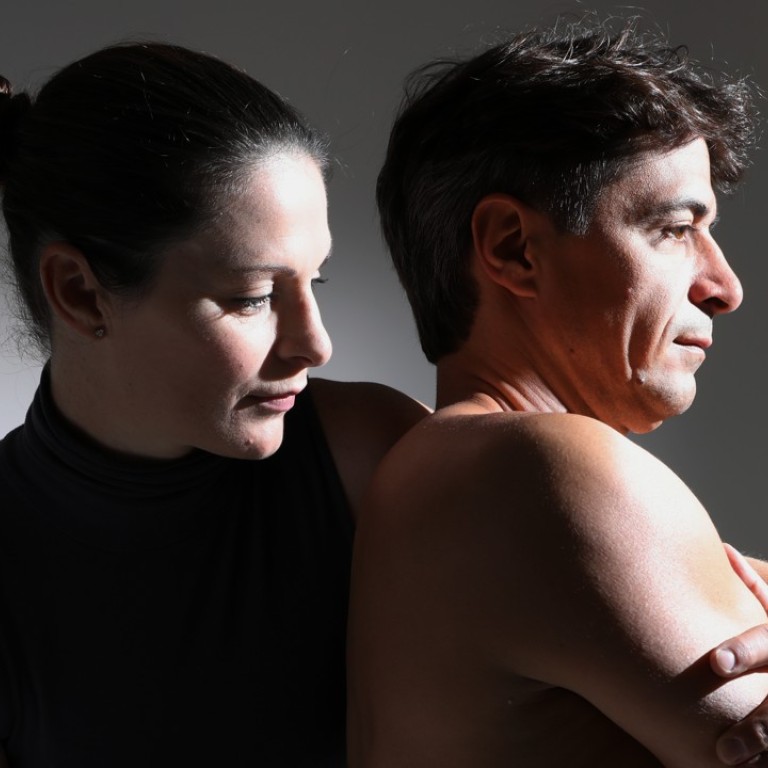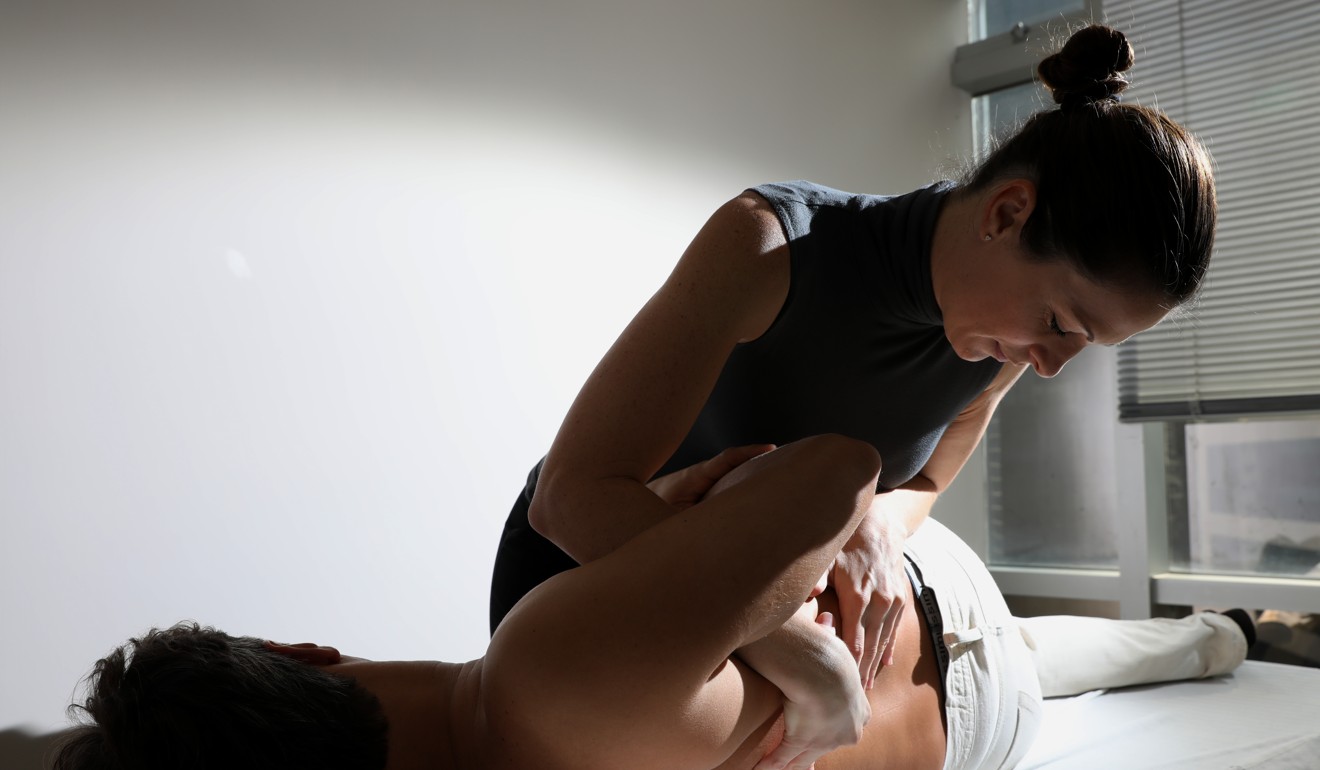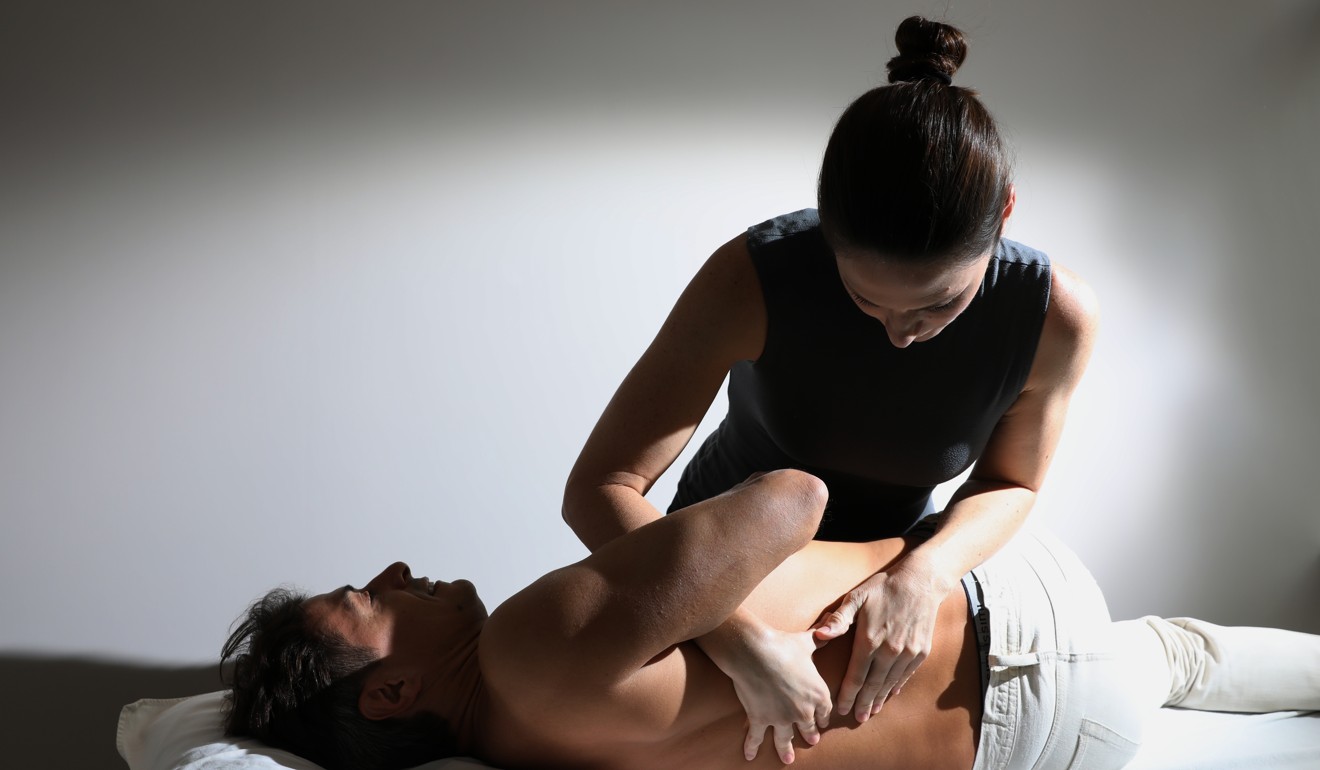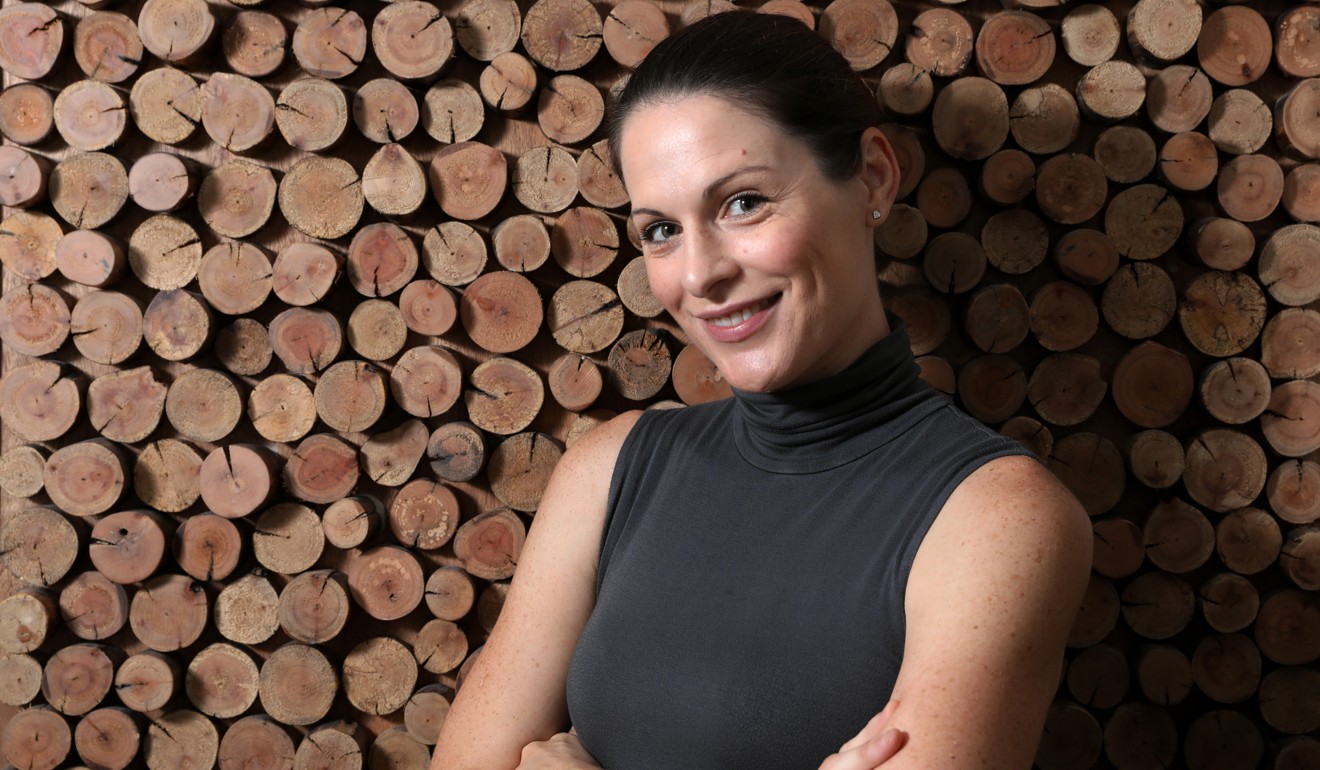
How to deal with back problems: an osteopath shares tips on keeping the pain away
- Long working hours in a sedentary posture with limited down time for rest and exercise can lead to upper back and neck restrictions
- Osteopath Jonine Nash offers advice about how to ward off and combat such problems
At least 80 per cent of people in the industrialised world suffer from back pain, either in acute episodes or as chronic pain. The onset can often be traced back to trauma, sports injury or postural strain. The body is very good at compensating for injuries and sometimes back pain does not immediately appear but can be triggered years later by either physical exertion or emotional stress.
Nick Battistella was a professional youth tennis player whose back pain developed from problems with his elbow joint. Over time, he developed scoliosis, (an ‘s’ shaped spine,) as a result of repetitive ‘top spin’ action in his youth. He became permanently misshapen and decided to see osteopath Jonine Nash, for treatment.
26 facts to know about your spine – to keep you healthy and pain free
“Initially treatment was about restoring what range of motion we could, and then targeting the lower back/ lumbosacral spinal area to encourage it to take over the flexibility which was lost in the upper lumbar spine,” says Nash.
After four years, Battistella suffered from a disc prolapse which compressed his spinal cord to such an extent he lost motor control of his feet, and sensory loss in other areas. He needed surgery and the side effects resulted in degeneration in his sacroiliac joints. This time, Nash’s focus was on reducing pain and redistributing weight bearing back into the lumbar spine.

Battistella is certain that without Nash’s treatment, he couldn’t play tennis today. “In 2007, I was offered the opportunity to represent the Hong Kong Cricket Club on a sporting membership. Without Nash’s work on my scoliosis and elbow, I would never have been able to participate, let alone play in the Hong Kong Men’s league,” he says.
Osteopathy is a type of alternative medicine. It aims to improve health across all body systems by manipulating and strengthening the musculoskeletal framework. A fundamental belief of osteopathy is that illness and injury are recorded in the body, so by observing movement, exercising joints, sensing fluid flow and palpating muscle groups, osteopaths can discover the sources of pain and discomfort and treat them.
“Osteopathy considers the entire body in an injury. All elements of the posture give us clues as to the extent of an injury or why it occurred. We treat not just the area of pain or symptoms, but any area which is contributing to its presentation,” says Nash.

Nash practises at Central Healing and the Matilda Medical Centre, both in Hong Kong’s Central business district, and says the most common problems she treats relate to the Hong Kong lifestyle of long working hours in a sedentary posture with limited down time for rest and exercise, such as upper back and neck restrictions. This is often associated with being overweight, unhealthy eating habits, high levels of stress and inadequate sleep.
For back pain sufferers, Nash suggests regular mini breaks, with a small cup at your desk so that you need to regularly get up to refill it. She says that standing desks are great, but prolonged standing can be as bad as prolonged sitting. Regular body work or massage can also be useful to clear building tension.
Back mobility exercises can also combat accumulative tension, prevent injury and improve the quality of your sleep. Nash, a fan of yoga, recommends stretching on a daily basis. She also emphasises the importance of staying hydrated.
Nash often advises the application of a foam roller for sufferers of stiffness, to apply deep joint articulation and muscle lengthening to various parts of the body. When used on the spine it aids segmental joint mobilisation and restores flexibility.

“These days we see a lot of ‘tech neck’, where a prolonged downward posture aggravates both the muscles and the intervertebral discs. Working on a laptop while sitting up in bed is also problematic, as it leads to hunched shoulders and neck pain.”
Mrs Chiu, another of Nash’s patients, suffered from upper back tension and tightness in her neck. This caused pressure on the underlying nerve supply and vascular structures, resulting in unbearable headaches. She also suffered from teeth clenching and grinding at night, which can be caused by tension and stress.

“In this case, mobilisation and manipulation techniques were applied to restore flexibility in her upper back and neck. Soft tissue techniques were also applied to the neck and upper back musculature, as this area is concentrated with nerves that, when irritated, lead to headaches,” said Nash.
Throughout her sessions, Nash likes to keep her patients talking or tells them a story to distract them from any discomfort they might feel.
“This is especially the case in the soft tissue/massage portion of the consultation, or before manipulation, so they resist less subconsciously. This approach works well, as my patients can relax and chat or listen to a story about my daughter or dog, while I treat them.”
A screwdriver through my eyeball: the true pain of a cluster headache
Mrs Chiu experienced great relief from her treatment: “I have always had headaches, however, after my first baby and possibly a bad epidural, my headaches became intolerable. After my first visit I felt instant relief. Nash recommended that I visit every couple of weeks and my headaches became infrequent.
“Now, not only am I free from headaches, I don’t need painkillers.”
For long-term back health, Nash is a big believer in educating her patients about their problem, the mechanism of injury; how it came about, and how to prevent it from recurring.
“Once we have corrected an injury, it’s about empowering a person to monitor and keep it away through exercise, stretching and sometimes lifestyle change.
Is the 80/20 weight loss rule true? Hong Kong naturopath says yes
“It is also common for patients to return for ‘maintenance’ sessions every few months to make sure they’re in top physical performance; offsetting potential injuries before they manifest. And though I grow very fond of my patients, I’m happiest when they don’t need to see me again because it means they’re back on track.”

